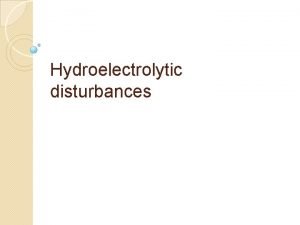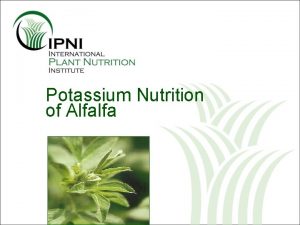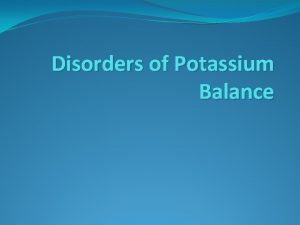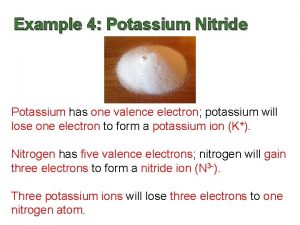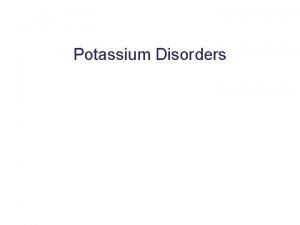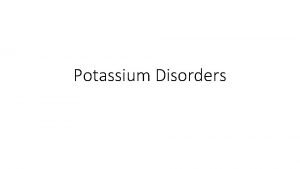Lecture 3 Plant nutrition 3 4 c Potassium








- Slides: 8

Lecture 3 Plant nutrition 3. 4 c

Potassium deficiency Soybean Corn Symptoms - mottled or marginal chlorosis, which then develops into necrosis on tips, margins and between veins - symptoms initially on more mature (“older”) leaves - leaves may curl and crinkle - stems may be slender and weak, with abnormally short internodal regions - in K-deficient corn, nodes may have increased susceptibility to root-rotting fungus present in the soil - this together with stem weakness results in bending of stems to the ground (lodging)

Iron deficiency Symptoms - strong chlorosis at the base of the leaves with some green netting - deficiency starts out with interveinal chlorosis of the youngest leaves, evolves into an overall chlorosis, and ends as a totally bleached leaf - bleached areas often develop necrotic spots - because iron has a low mobility, iron deficiency symptoms appear first on the youngest leaves - iron deficiency is strongly associated with calcareous soils and anaerobic conditions, and it is often induced by an excess of heavy metals

Analysis of plant tissues reveals mineral deficiencies

Influence of the p. H on the availability of nutrient elements in organic soils - main losses of nutrients from agricultural systems is due to leaching that carries dissolved ions, especially nitrate, away with drainage water - in acid soils, leaching may be decreased by the addition of lime – a mix of Ca. O, Ca. CO 3 and Ca(OH)2 –to make the soil more alkaline, because many elements form lesssoluble compounds when the p. H is higher than 6 - width of the shaded areas in the graph indicates the degree of nutrient availability to the plant root

Treating nutritional deficiencies • Inorganic fertilizer… – Straight fertilizer. . Super phosphate, ammonium nitrate – Compound fertilizer (i. e. contain two or more mineral nutrients) • Organic fertilizer – Residues of plant and animals – Mineralization (organic compounds broken down by microorganisms)

Foliar application of fertilizers • Uptake is faster • Deficiency can be prevented • Not tied up in soils (Fe, Mn and Cu) • Expensive • Vineyards

The principle of cation exchange on the surface of a soil particle - cations are bound to the surface of soil particles, because the surface is negatively charged - addition of a cation such as K+ can displace another cation such as Ca 2+ from its binding on the surface of the soil particle and make it available for uptake by the root - mineral anions (NO 3 _, Cl_) tend to be repelled by the negative charge of the surface and remain dissolved in soil solution; capacity of exchange of anions is smaller than of cation








